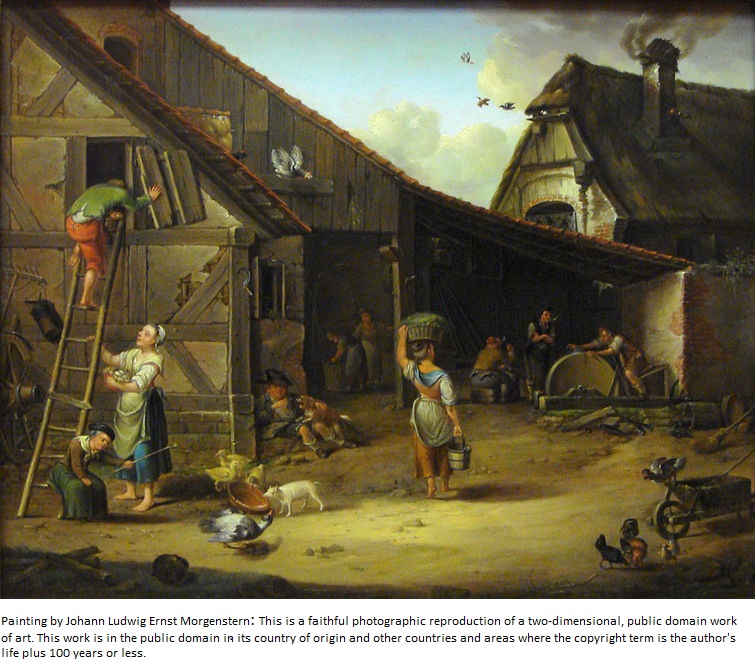Unveiling Medieval Farming Secrets: Techniques Revealed

Medieval farming techniques were the backbone of societies for centuries, shaping economies, cultures, and daily life. From crop rotation to animal husbandry, these methods were both innovative and sustainable, ensuring survival in an era without modern technology. Today, there’s a growing interest in reviving these practices for their eco-friendly benefits and historical significance. Whether you’re a history enthusiast or a modern farmer looking for sustainable solutions, understanding medieval farming secrets can offer valuable insights. Dive into this blog to explore the techniques that kept medieval communities thriving, and discover how they can inspire contemporary agriculture. (medieval farming techniques, sustainable agriculture, historical farming practices)
The Foundations of Medieval Farming

Medieval farming was rooted in simplicity and resourcefulness. Farmers relied on manual labor, basic tools, and a deep understanding of the land. The absence of machinery meant every technique was honed for efficiency and sustainability. Let’s explore the core principles that made medieval agriculture successful.
Crop Rotation: The Key to Soil Health
One of the most groundbreaking medieval farming techniques was crop rotation. Instead of planting the same crop year after year, farmers alternated between grains, legumes, and fallow periods. This method prevented soil depletion and reduced pest infestations. For example, planting legumes like peas or beans restored nitrogen to the soil, making it fertile for the next cycle.
📌 Note: Crop rotation is still widely used today for its soil-preserving benefits.
Animal Husbandry: Multipurpose Livestock
Livestock played a crucial role in medieval farming. Animals like oxen, horses, and sheep were not just sources of meat and dairy but also labor and fertilizer. Oxen plowed fields, sheep provided wool, and animal manure enriched the soil. This integrated approach maximized resources and minimized waste.
Tools and Techniques That Shaped Medieval Agriculture

Medieval farmers relied on simple yet effective tools to cultivate their land. These tools, combined with traditional techniques, ensured productive harvests despite the lack of modern technology.
Hand Tools: The Farmer’s Arsenal
Tools like the plow, hoe, and sickle were essential for planting, weeding, and harvesting. The heavy wooden plow, often pulled by oxen, turned the soil, while the sickle efficiently cut crops like wheat and barley. These tools were durable and easy to repair, making them ideal for long-term use.
Irrigation and Water Management
Water was a precious resource, and medieval farmers developed ingenious ways to manage it. Techniques like terracing on hilly terrain and canal systems ensured crops received adequate water. These methods not only conserved water but also prevented soil erosion, showcasing early sustainable practices.
Medieval Farming for Modern Applications

The principles of medieval farming are gaining traction in today’s sustainable agriculture movement. As we face challenges like soil degradation and climate change, these ancient techniques offer practical solutions.
Adopting Crop Rotation Today
Modern farmers are revisiting crop rotation to reduce reliance on chemical fertilizers and pesticides. By alternating crops, they maintain soil health and biodiversity, mirroring medieval practices. This approach is particularly popular in organic farming.
Livestock Integration in Contemporary Farms
Integrating livestock into crop production is another medieval practice making a comeback. Known as agroecology, this method enhances soil fertility, reduces waste, and promotes a closed-loop farming system. It’s a win-win for both the environment and farm productivity.
Checklist: Implementing Medieval Farming Techniques

- Start with crop rotation to improve soil health.
- Incorporate livestock for natural fertilization and labor.
- Use hand tools for small-scale farming.
- Explore terracing or canal systems for efficient water management.
- Adopt sustainable practices inspired by medieval methods.
Medieval farming techniques were not just a product of necessity but a testament to human ingenuity. From crop rotation to livestock integration, these methods ensured sustainability and productivity for centuries. Today, as we seek eco-friendly solutions, revisiting these practices can offer valuable lessons. By blending ancient wisdom with modern innovation, we can create a more sustainable future for agriculture. (medieval farming techniques, sustainable agriculture, historical farming practices)
What is crop rotation, and why was it important in medieval farming?
+
Crop rotation involves alternating different crops in the same field each season. In medieval farming, it prevented soil depletion, reduced pests, and maintained fertility by diversifying plant types.
How did medieval farmers manage water without modern technology?
+
Medieval farmers used techniques like terracing and canal systems to conserve water and irrigate crops efficiently, ensuring sustainable water management.
Can medieval farming techniques be applied to modern agriculture?
+
Yes, practices like crop rotation, livestock integration, and hand tools are being revived in modern sustainable agriculture to promote eco-friendly farming.

